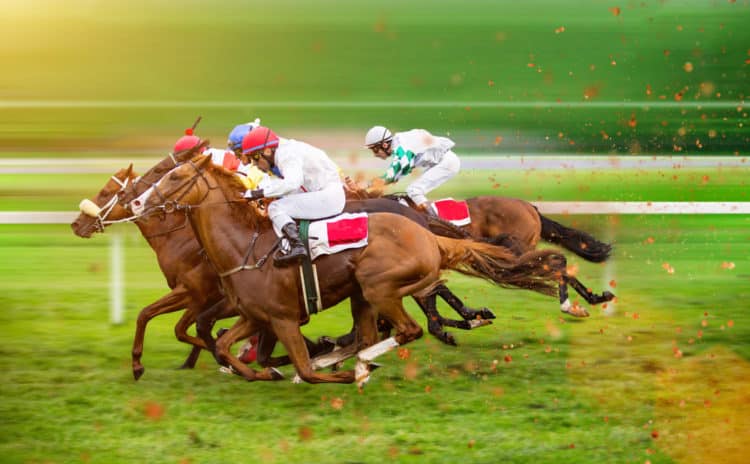Horse racing is the one sport where the studs compete against the gals on an even field. This often comes as news to many horse racing enthusiasts who assumed that the traditional separation of the sexes will carry over to the race track. But as one horse racing fan noted, “The race track separates the men from the boys, the women from the girls and the winner from them all.”
Performance
It’s a common assumption that the male horse is superior to the female. Some observers say outright that the female lacks size, strength and determination. That’s a matter of opinion but it’s a fact that female horses are the minority in the racing world. 63% of race horses are male which matches the 67% win rate for males. The Kentucky Derby – America’s most prestigious horse race – has seen only three fillies win in the competition’s 138-year-history.
Why do the males out-perform the females on the race track? One observer suggests that it’s because males are bigger and taller than the females. In addition, hormones come into play. “A lot of it also has to do with hormones. Temperament-wise, female horses are probably a bit more placid. And when they come into season — have their periods — they can be unpredictable.”
Older male horses (aged 4 and older) who haven’t been castrated perform best, giving an 11.68% strike rate and an A/E of 1.21. The A/E number is the actual number of wins divided by the expected number of wins based upon odds. An A/E of bigger than 1 represents a set of results where the runners outperform their odds, and under 1 represents horses that haven’t won as many races as they should have. They are followed by older females (mares), and then gelding (males who have been castrated, usually to help them focus better), colts (males aged 4 and younger). Fillies (aged 4 and younger) are on the lowest level of performance.
Although male horses win the most races, the handicaps don’t show a strong gender bias when it comes to the sexes. Older males do best in flat races. Most competitors in the races that involve jumps are geldings where they enjoy more success.
There is more of an even balance of males and females under the flat code.
Conditions
Observers have noted that mares struggle on the all-weather (AW) surfaces where they operate at just a 6.96% strike rate in mixed handicaps. In such conditions mares give a -35.3% ROI and an A/E of 0.91. Fillies seem to do better when racing on grass. In such cases there is a smaller difference in terms of their ROI, A/E and win percentage.
No one has yet come out with a definitive answer to explain why females perform poorer on the AW than turf. One possibility involves the temperament of the horses when they are faced with the kickback of the artificial surface or with the shape of their hooves. There has, however, been a clear year on year trend of the mares doing better on turf, particularly with the older horses.
Seasons
Some people have noted that female horses perform best when the sun is on their back. This theory is actually borne out by data. Both mares and fillies struggle in the winter months and peak during the summer. Professional bettors know that the return on investment from backing female horses in the winter months is not great. There’s always a pick-up in the spring and then, in the summer months, the return is the greatest.
Since racing in winter is exclusively on the all-weather, it may be that since females underperform on the artificial surface, the results are skewed somewhat. What is clear is that there’s a clear correlation between higher temperatures and female horses performing better. Mares and fillies tend to ‘go into their coat’ earlier than males. As their bodies become woolly in preparation for the cold conditions, their performance dips.
Another possible reason relates to the females’ estrous cycle (also known as ‘heat’). This cycle occurs in the summertime. Some observers believe that the absence of these hormones in the wintertime affects the females’ performance adversely.
2 Year Old Fillies
The statistics for older fillies and mares don’t hold true for 2-year-old fillies. Horse racing observers note that these females provide the best value at the start of the year in the early two year old races. Pundits see a clear trend that shows a strong start to the year and then poorer performance as the year progresses.
Fillies operate at 10.67% in mixed maidens in April, providing an impressive A/E of 1.08 and a blind ROI of just -3.65%, winning 8% more races than their odds entitle them to. By December however, the strikerate is down to 7.61%, delivering an A/E of 0.81 and an ROI of -47.04%, winning just 81% of the races.
Fillies may do better at the beginning of the year due to the fact that there is less difference in the size and strength of the runners at this early stage of their careers. In the early spring the fillies allowance is relatively more advantageous when compared to late summer and the fall and following winter. That’s when the males are more physically developed.
In short, you don’t want to back fillies or maidens in November/December when daylight hours are short, when it’s cold and when the males are able to carry the extra weight better.
In summary, it’s a reasonable question to ask – should the horse racing world continue to have males and females compete against each other?






















